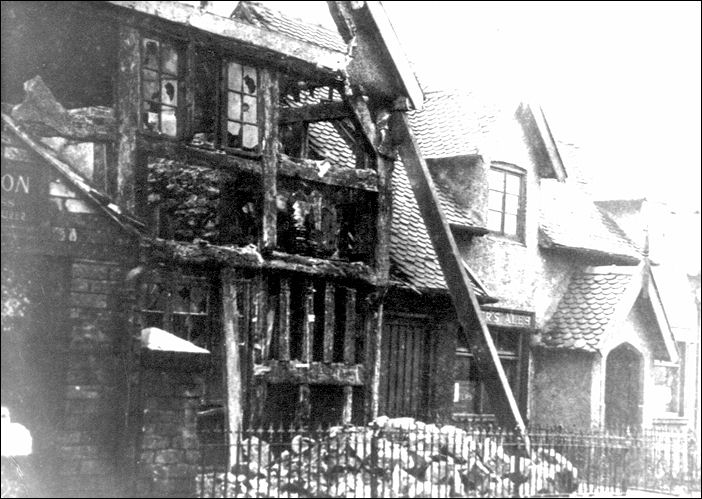Stoke-on-Trent is a short year away from commemorating its centenary as a
federated county borough. In 1910 the separate district administrations of
six principal towns decided to chuck their lot in together and have a go
at being a single-managed local authority.
“For generations the separate towns had shared the common resources of
subterranean mineral wealth and delivered the collective skills of art
and manufacture and talent in retailing and exporting it. In plain
terms it made good sense to pool these resources,” considers
Potteries’ historian Steve Birks.
“But it was a nervous beginning with some of the parties having to
be persuaded kicking and screaming. Nevertheless it was successful –
so successful that after fifteen years the Federated towns were
rewarded by King George V who conferred upon it the status of City
of the Realm.”
|
Stoke-on-Trent is one of only 50 local government districts and civil
parishes in England that have the right to claim city status. It may have
been seen as an upstart alongside such bastions of the Roman Age as Bath
and Chester, or centres of learning like Oxford and Cambridge, or the
religious cities of Canterbury and Winchester, and the major gateways of
international trading Liverpool and Bristol, or reforming municipalities
like Manchester and Birmingham. Nevertheless, Stoke-on-Trent sits proudly
on the list. How it achieved this can be explained by who did what, when,
and how. More importantly does the city’s motto – Vis Unita Fortior
(united strength is stronger) still hold up.

“I can
see that four important basic elements influenced its rise and
subsequent realization in becoming one of the world’s most important
manufacturing centres and its development as an independent society
through social enlargement,” offers Steve. “The first clearly lies in
its mineral assets. The second is the resolve and excellence of the
artisans that dug out the coal, iron and clay and moulded it into a
superior and saleable product. Third is its proximity with natural
marketplaces, in particular Newcastle-under-Lyme which is really the
seventh town. But most important is the quality of civic administrators
both elected and appointed.”
Much of
the key research on North Staffordshire’s municipal constitution was
produced by John Ward his in seminal work, The Borough of Stoke on Trent,
in 1843.
“Ward
wasn’t a local man,” continues Steve. “He was born in Leicestershire in
1781 and became a qualified solicitor. Like many enterprising
prospectors he was attracted to the soaring opportunities of the
Potteries during the Industrial Revolution when many support-industries
settled in the new expanding towns. Ward was 28 when he came to Burslem
in 1809 where he secured the representation of a number of civil
agencies. He became chief constable of the town and a licensing
commissioner. But his interest in local history was his overriding
passion.”
Ward
joined forces with a Manchester printer and schoolteacher name Simeon Shaw
who was teaching at an academy in Northwood Hanley. Shaw was an
antiquarian collector and shared his research with the famous Burslem
potter Enoch Wood who was, in the first decades of the 19th
century, already an established civic leader. A published historian, Shaw
teamed up with John Ward to write a series of articles recording the
history and Parliamentary Union of the Borough of Stoke on Trent from
1832. And it was the ground-breaking Reform Act of 1832 that provided the
spark and the backdrop to this history.
|
“The
1832 Act revised many of the earlier manorial boundaries into
electoral constituencies,” says Potteries’ academic historian Richard
Talbot.
“It
identified eleven existing townships in North Staffordshire –
Tunstall, Burslem. Hanley, Shelton, Penkhull-with-Boothen, Lane End
and Longton, Fenton Vivian, Fenton Culvert; the Hamlet of Sneyd and
the Vill of Rushton. These locations were specific divisions under
the manorial Courts Leet and Courts Baron that implemented and
upheld local feudal and medieval rules. One of these courts sat at
Penkhull every third Thursday in a local farmhouse near the
Greyhound pub. In 1540 the Greyhound became the Manor Courthouse of
the more important Newcastle-under-Lyme from 1558 to 1829. The
building was enlarged in1704 and subsequently reconstructed in 1936
to what we more or less see today.”

The
Greyhound under reconstruction in 1936 after fire damage
Very
little of the original sixteenth-century oak frame is preserved. But a
stone chimney inside a lounge is unique also a rear timber-framed wing
and a room on the north side.
|

Richard Talbot outside the Greyhound, Penkhull
“Until the Reform Act the district was represented in parliament at county
level,” says Richard.
“The Industrial Revolution had seen many towns grow rapidly from a
collection of villages into decent size communities. Yet they had no
independent parliamentary representation. The Reform Act took the new
industrial towns into consideration by enfranchising all males with
property of a rateable value of £10. It did away with corrupt pocket
boroughs – constituencies with an electorate of fewer than 2000. And it
created 22 new constituencies not previously represented, one of which was
the new borough of Stoke-upon-Trent. It’s first two MP’s were Josiah
Wedgwood II and the Burslem potter John Davenport. Little did they know
then but these were the first steps to Federation.”

click the "contents"
button to get back to the main index
